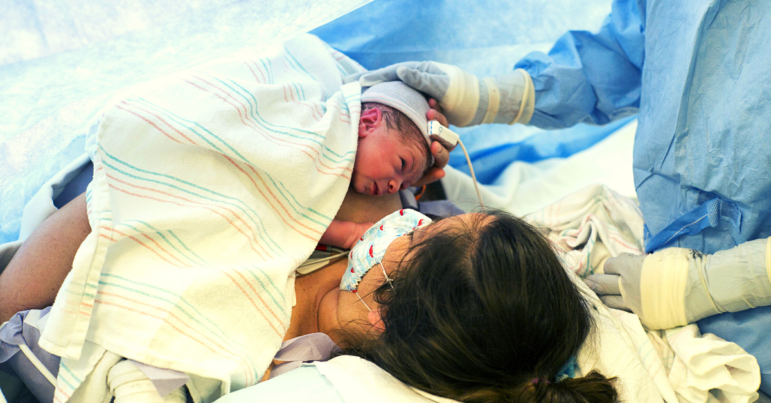First time cesarean deliveries have been on the rise since 2019, rising from 21.6% to 22.4% after fluctuating for years. Some have speculated that this may be due to heightened concerns during COVID-19, whereas others focus their attention on the financial and legal implications for the providers delivering babies.
According to the CDC, this trend applies across race and ethnicity as well as gestational age, though individuals identifying as non-Hispanic Native Hawaiian or Other Pacific Islander have a much higher rate of first time C-sections. The rise in this type of surgery also cuts across states, with 31 states plus Washington, DC all experiencing rising rates.
Studies have shown that C-sections are associated with higher rates of maternal complications and mortality. Research has also found that the likelihood of a pregnant person delivering via C-section is higher when they deliver at hospitals with higher profits from C-section procedures. The rising rates of C-sections are concerning enough for the U.S. Department of Health and Human Services to make it a Healthy People 2030 goal to reduce C-section rates.
Are C-sections being overused at the detriment of our vulnerable new parents?
C-Sections: Life-saving in some cases, overuse in others
The earliest c-sections were performed to save lives, and still serve this purpose in many cases today. Modern C-sections can be undoubtedly life-saving, preserving the health of both mother and baby, and are an essential tool for reproductive health care providers. Many pregnant people elect to have a C-section to allow them to plan around delivery or simply because they would prefer not to deliver vaginally. Others are pressured into surgery, or have their wishes ignored. Autonomy over delivery methods is vital and ideally the person delivering the baby should be able to choose their delivery method based on solid information, conversations with their healthcare providers, and a deep understanding of their own circumstances. Thus, Americans are increasingly choosing to undergo C-sections even if they are considered low-risk and the surgery is not medically indicated.
There are a few considerations to be made prior to electing for a C-section that are not well-known by the public. C-sections are surgery, meaning that all of the risks of a standard surgery including infection and complications are possibilities. In fact, C-sections are associated with higher risks of blood clotting and infections, with some studies tying them to higher rates of maternal mortality and morbidity and potentially factoring into the ongoing maternal mortality crisis. C-sections have a longer healing time than vaginal deliveries, and those who delivered via C-section are likely to have repeat C-sections that increase risks with each surgery.
All of these factors led the American College of Obstetricians and Gynecologists (ACOG) to address their concerns about the overuse of C-sections, years ago.
“Cesarean birth can be life-saving for the fetus, the mother, or both in certain cases. However, the rapid increase in cesarean birth rates from 1996 to 2011 without clear evidence of concomitant decreases in maternal or neonatal morbidity or mortality raises significant concern that cesarean delivery is overused.”
American College of Obstetricians and Gynecologists (ACOG)
ACOG reaffirmed this guidance in 2019, indicating that this problem is difficult to address even over the course of multiple years. The latest CDC data supports the concept that cesarean overuse is ongoing and likely to continue. Maternal preference, provider preference, and financial incentivization of elective surgeries are all big parts of the puzzle, making it difficult to identify the best leverage point for change. California was able to reduce their rates from 26.0% to 22.8% over the course of 5 years, demonstrating that reducing rates is possible through coordination, data collection, and targeted public messaging. What is clear is that C-sections provide no better outcomes than vaginal delivery for low-risk patients and may in fact be putting them at increased risk for complications.
